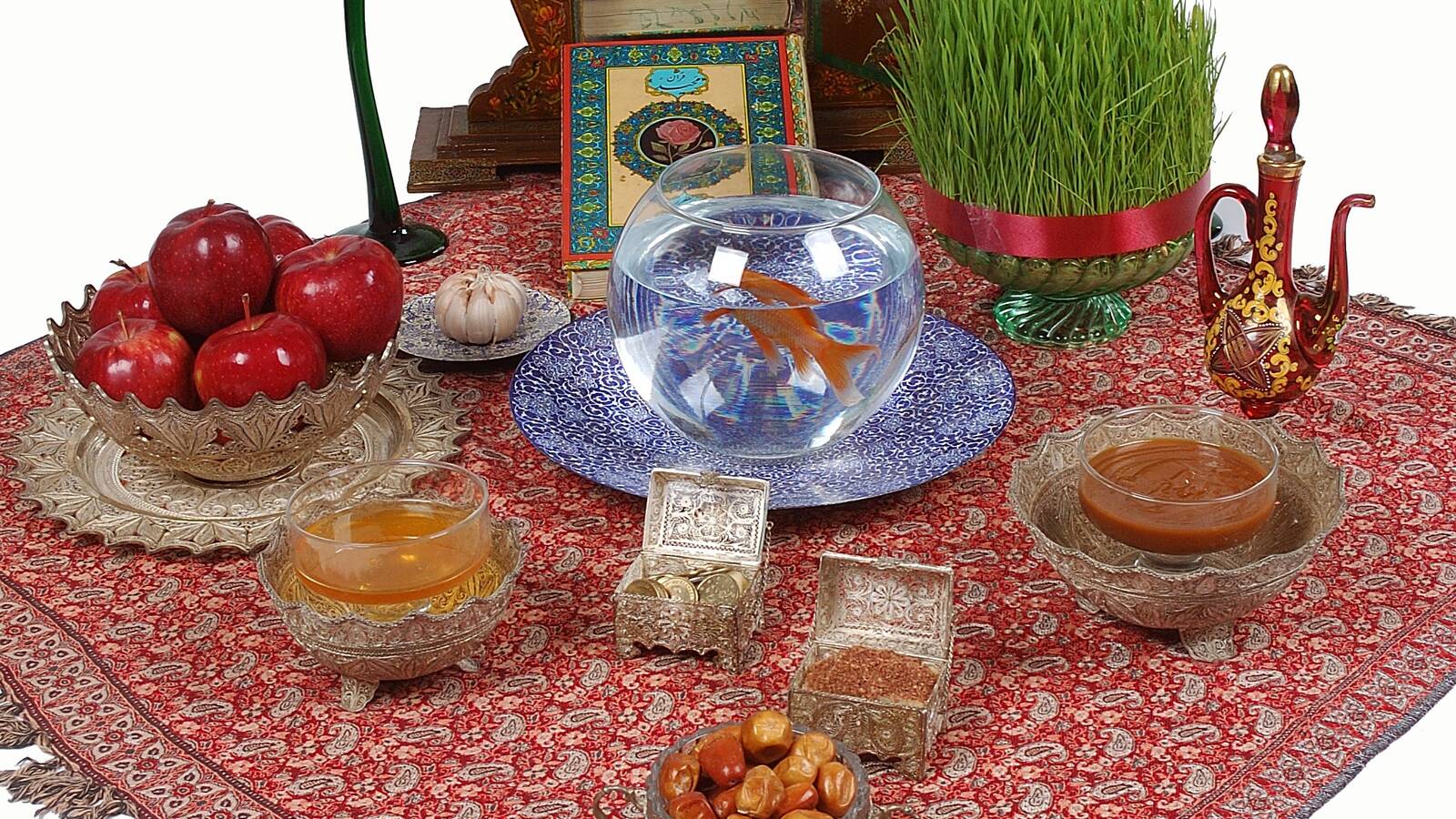
Nowruz (literally translated New Day) is one of the oldest celebrations in ancient Persia, which is held vigorously in the first day of spring marking the beginning of the Iranian calendar (21 March). Nowruz festivities celebrate the beginning of rebirth of nature and lasts for 13 consecutive days. Celebrated by millions of people in Afghanistan, Azerbaijan, Tajikstan, India, Kyrgyzstan, Pakistan, Uzbekistan and Turkey, Nowruz is inscribed on UNESCO’s Intangible Cultural Heritage List. The first universal festival of Nowruz was held in 2010 (March 27), in Tehran and the city introduced as the "Nowruz Secretariat". Nowruz includes the official holidays in some countries and in Iran the first four days are considered the official holidays but it continues to the 13th day in some organizations.
Nowruz is celebrated practicing certain rituals such as spring cleaning, sprouting wheat or mung beans, buying new clothes, cooking local foods and baking sweets.
Families usually gather around the Haft-Seen table to celebrate the precise moment the Earth finished its annual journey around the Sun to celebrate the first day of spring. The Haft-Seen table contains seven edible items that their names begin with a letter in the Persian alphabet which is equivalent to “S” in English. It usually includes Seeb (apple), Sabze (green sprouts), Serke (vinegar), Samanoo (a delicacy made from wheat sprouts), Senjed (the dried fruit of the oleaster tree), Sumac, and Seer (garlic).
You may see a holy book, mirror (sign of sincerity), gold fish (sign of livelihood), candles (sign of light and bright), decorated eggs (sign of rebirth), and Divan-e Hafez on the table. Sabzi Polo with fried fish is served as the main course of most of Iranian families on Nowruz day.